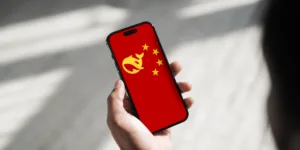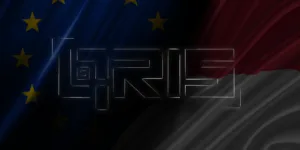Fico’s resistance to EU tariffs on Chinese electric vehicles may backfire, undermining Slovakia’s long-term interests.
Slovakia voted against adopting EU tariffs on China-produced electric vehicles (EVs), revealing its flawed approach to dealing with Beijing. Prime Minister Robert Fico’s opposition to these tariffs reflects a misunderstanding of the broader dynamics at play.
EU member states voted on the European Commission’s proposal to impose countervailing duties on the imports of China-produced EVs. The vote came after a year-long investigation into Chinese government subsidies for the sector and fraught negotiations between the Commission and member states. Although only five member states opposed the tariffs, the Commission received the go-ahead to implement them, aiming to curb the market distortions caused by China’s unfair subsidisation of its EV producers.
Slovakia, whose Prime Minister Robert Fico is set to visit Beijing at the end of October, was one of the dissenting states. Following the vote, Fico voiced his displeasure with the EU moving ahead in his video-series ‘What didn’t fit into the press briefing,’ labelling the tariffs as part of a ‘nonsensical trade war pursued by the European Commission’ with ‘devastating effects for the European economy.’
He argued that while ‘European markets should be protected,’ competition in the EV sector should be based on ‘quality of production and not high tariffs.’
The flaw in Fico’s argument: China’s large-scale subsidising
While it is hard to object to Fico’s dictum that European and Chinese car producers should compete on quality, his conclusion that EU tariffs disrupt normal market competition is deeply flawed. These tariffs did not emerge in a vacuum – they are a direct response to China’s anti-competitive practices and heavy subsidisation of its EV industry.
While Chinese EV producers are certainly leaders in the field, their emergence in the global auto markets can also be attributed to China’s long-term industrial policy of subsidies, tax breaks and other forms of state aid that pumped 200 billion yuan (approximately 26 billion euros) between 2009 and 2022. The support extends throughout the EV supply chain – from raw materials for batteries to transportation costs for exports to Europe. Even foreign automakers who establish EV manufacturing in China have benefitted from these subsidies, expanding the local ecosystem and further tying European carmakers’ interests to those of China.
Fico’s portrayal of the countervailing duties as a trade war also overlooks the EU’s measured approach compared to that of other Western economies. The tariffs, which can reach as high as 45%, are considerably lower than those imposed by the United States (raised from 25% to 100% this past May) and Canada (also 100% as of October). Countries with friendlier relations with China, such as Brazil and Turkey, have also adopted similar tariffs. Furthermore, the EU’s tariffs strictly follow the World Trade Organisation’s regulations on subsidy investigation and adoption of countervailing duties.
The European Commission’s countervailing duties can hardly be considered a trade war on China, considering that the tariffs are imposed on any automaker, Chinese or Western, which is manufacturing in China and therefore benefitting from state aid whether directly or indirectly. In other words, the tariffs follow purely economic considerations. Furthermore, the tariffs differentiate among companies based on how many subsidies are received and the degree of cooperation with European Commission investigations.
Slovakia’s bet on EV’s – and on China
Over the past three years, Slovakia has increasingly seen legacy automakers, such as Volkswagen, KIA and Stellantis, begin producing EVs. China-owned Volvo is also building an EV-only factory in eastern Slovakia.
Rumour has it that SAIC, a Chinese state-owned car producer, is also considering Slovakia in its European expansion plans. Down the supply chain, Chinese battery giant Gotion has entered a joint venture with local startup Inobat to establish a battery production facility in Western Slovakia. Slovakia’s bet on EVs has been a cornerstone of Fico’s economic policy, a trend that will likely continue following Fico’s upcoming trip to China, during which he is expected to sign a strategic partnership with Beijing.
However, Fico’s opposition to EV import duties undermines his goal of attracting more EV investments, including those from China to Slovakia. Chinese automakers set up shop in Europe partly to avoid future tariffs and sanctions. Imposing countervailing duties would help level the playing field by removing China’s unfair, anti-competitive advantage and fostering more genuine investment in Europe’s EV sector.
Nevertheless, Fico’s stance may curry political favour – both with his hosts in Beijing and domestically, where his government is facing increasing scrutiny from Brussels over rule of law degradation and democratic backsliding.
Public or private interests?
Fico’s opposition to EV tariffs seems to prioritise the private interests of certain automakers – particularly Volkswagen – over the public good. China is Volkswagen’s largest export market, with 20% of its production exported to China in 2023 (down from 24% in 2022 and 25% in 2021). This export is mostly composed of SUV-type vehicles, which China has threatened to slap with retaliatory tariffs. Chinese retaliation against European tariffs could impact Volkswagen’s exports, but other Slovak-based automakers, like KIA Motors, which does not list China among even its top five export destinations, are less vulnerable.
Hence, the issue of EV tariffs is mostly one of private interest. In getting various proxies to present this as an issue of public interest, China has cleverly exploited the situation to extract votes against the tariff proposal, as attested by the case of Slovakia and Germany.
China’s threats of retaliation have so far been cautious. While China imposed tariffs against European brandy exports after the EU vote, targeting France, which was seen as the main driver of the charge, it took no actions against Slovakia or other countries that opposed EV tariffs. Retaliation against Slovakia’s most vulnerable car producers seems unlikely.
The road ahead
Policymakers must balance short-term gains from China’s EV investment with long-term needs to improve European competitiveness and level an uneven playing field in the industry. Navigating the space between the need to transition the car industry towards EV production while preventing unfair competition from China is no easy task.
While adopting countervailing duties on EV imports from China was a necessary first step, Europe must pursue industrial policies that encourage the relocation of EV production to Europe and technology transfers from Chinese companies, ensuring long-term benefits from Chinese greenfield investments.
Among the challenges it faces, Europe must contend with China’s preference for forcing technology transfers in the opposite direction, from Western companies eastward, as a pre-condition for market access.
In September China’s Ministry of Commerce warned Chinese automakers against transferring EV technology to Europe, advising them to invest in assembly plants for knock-down kits to maintain control over key technologies.
Fico’s trip to Beijing offers an opportunity to push for China to Europe transfers. Instead of vilifying the European Commission’s approach, Fico should use his visit to advocate for policies that benefit Slovakia’s EV sector and strengthen European competitiveness. Given the importance of the European market for Chinese companies, they may well comply.
This article was originally published by Visegrad Insight.







